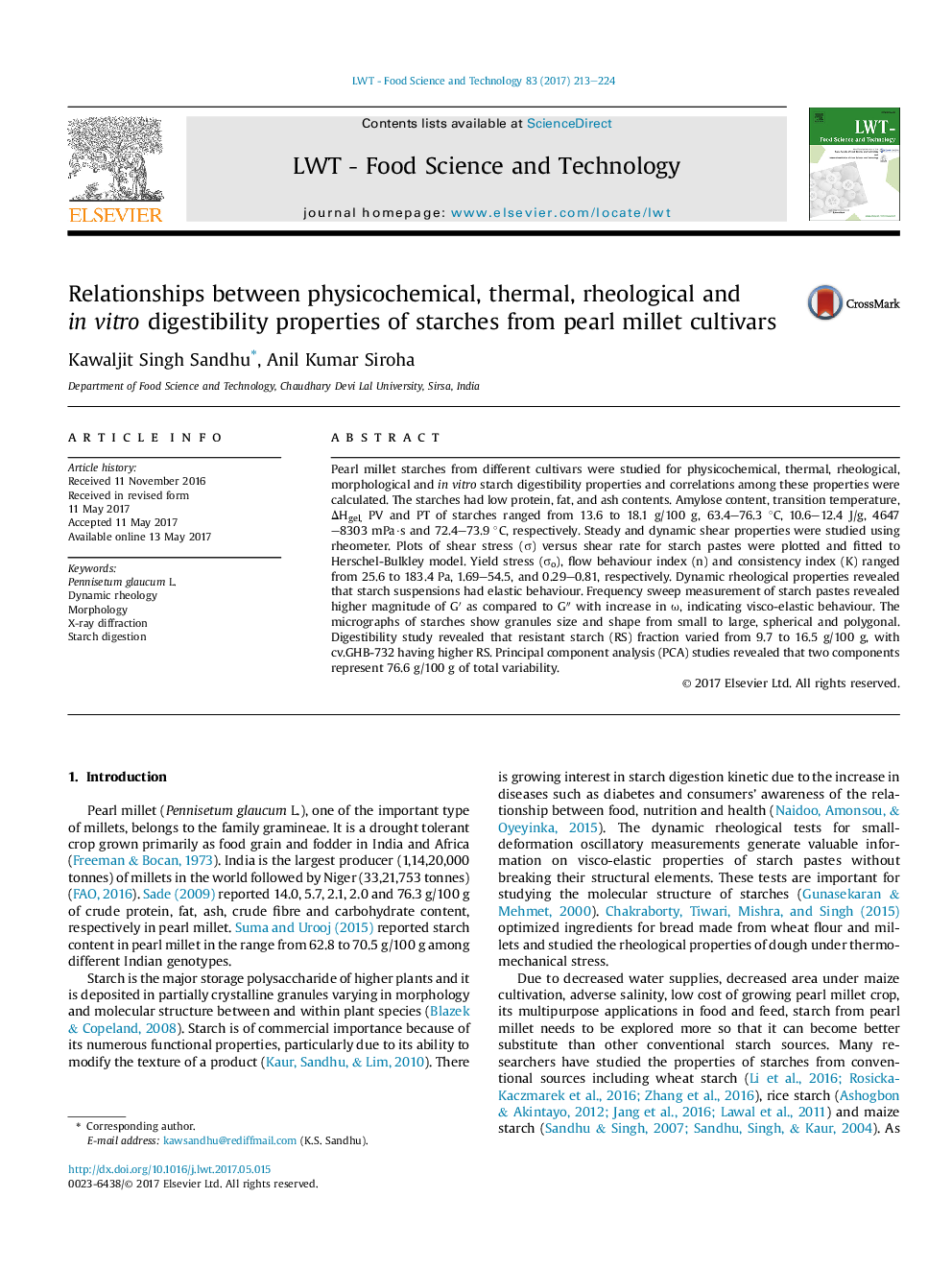| کد مقاله | کد نشریه | سال انتشار | مقاله انگلیسی | نسخه تمام متن |
|---|---|---|---|---|
| 5769092 | 1628515 | 2017 | 12 صفحه PDF | دانلود رایگان |

- Starches were rich in amylopectin as evidenced by x-ray diffractions.
- Pearson correlations among different starch properties established.
- Harschel-bulkley model fitted well to flow behaviour of starch pastes.
- Dynamic rheology revealed elastic behaviour of starch pastes.
- Resistant starch content varied from 9.7 to 16.5Â g/100Â g.
Pearl millet starches from different cultivars were studied for physicochemical, thermal, rheological, morphological and in vitro starch digestibility properties and correlations among these properties were calculated. The starches had low protein, fat, and ash contents. Amylose content, transition temperature, ÎHgel, PV and PT of starches ranged from 13.6 to 18.1 g/100 g, 63.4-76.3 °C, 10.6-12.4 J/g, 4647-8303 mPa·s and 72.4-73.9 °C, respectively. Steady and dynamic shear properties were studied using rheometer. Plots of shear stress (Ï) versus shear rate for starch pastes were plotted and fitted to Herschel-Bulkley model. Yield stress (Ïo), flow behaviour index (n) and consistency index (K) ranged from 25.6 to 183.4 Pa, 1.69-54.5, and 0.29-0.81, respectively. Dynamic rheological properties revealed that starch suspensions had elastic behaviour. Frequency sweep measurement of starch pastes revealed higher magnitude of Gâ² as compared to Gâ³ with increase in Ï, indicating visco-elastic behaviour. The micrographs of starches show granules size and shape from small to large, spherical and polygonal. Digestibility study revealed that resistant starch (RS) fraction varied from 9.7 to 16.5 g/100 g, with cv.GHB-732 having higher RS. Principal component analysis (PCA) studies revealed that two components represent 76.6 g/100 g of total variability.
Journal: LWT - Food Science and Technology - Volume 83, 15 September 2017, Pages 213-224